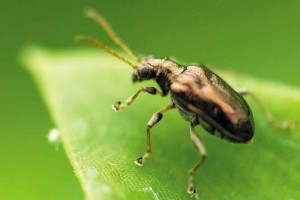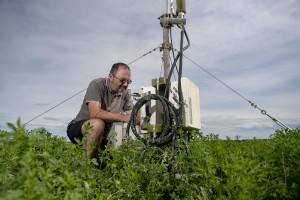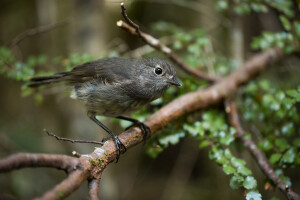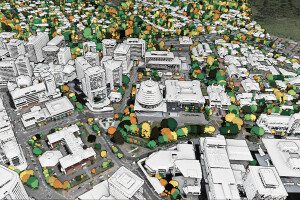Discover our research
Much of our research work is focused where these four research groups overlap. This integration is important to many of our partners, who must address issues collectively and not in isolation. Our partners address not only the integration of land, water, and biodiversity, but also the integration of social, economic, and cultural dimensions.
Our research in these four areas has 12 research outcomes, which are needed by our partners.

Managing invasive species
Aotearoa New Zealand’s indigenous biodiversity evolved in isolation and much is globally unique. We curate national and Pacific collections of biodiversity on land (plants, invertebrates, fungi, and microorganisms), and our research helps users understand and value its richness, observe changes and risks from exotic species, and find new uses for biological materials.
 Land resources and climate change
Land resources and climate change
The utilisation of our land resources is critical to support economic, societal, and environmental benefits for Aotearoa. These land resources are also key elements in understanding our emissions balance, supporting mitigation, and enabling adaptation and resilience to climate change.
Our twelve research outcomes
1. Critical knowledge of the wealth, state, and trends in our biodiversity, soils, and lands informs natural resource decision-making
Our environmental data resources and foundational knowledge provide fundamental information for AoNZ’s economy, environmental management, environmental recovery, and social development. Our data are used by policy makers and land managers across the country and further afield in the Pacific region to underpin wise choices and decisions about land use.
2. Hapū and iwi act confidently as kaitiaki of their whenua using science and mātauranga Māori
In a post-Treaty of Waitangi settlement landscape, iwi, hāpu, and whānau are repositioning themselves to enable active kaitiakitanga, from the bottom up and the top down. Across Manaaki Whenua, but particularly through our Manaaki Taiao rōpū (group) of kairangahau Māori (Māori researchers), we work with iwi, hapū, and communities to develop strategic planning, policy, and monitoring tools informed by mātauranga Māori and science to support kaitiakitanga. Over time we are building strategic partnerships with our Māori partners for mutual benefit.
3. Māori land trusts and incorporations achieve their aspirations for their land
Following Treaty settlements, Māori entities are increasingly important landholders in AoNZ. We aim to provide tools and enhance capabilities in partnership with Māori land trusts and other incorporations to support their management decisions.
4. Ecological restoration is guided by knowledge of past and present ecosystems
Our research provides baseline information to show how species and ecosystems respond to environmental changes and human activities, and to help inform conservation management plans and policies.
5. Land use, soils, and erosion are managed to improve freshwater quality
We undertake a diversity of research and consultancy projects, including fundamental understanding of erosion processes, landscape dynamics and response in a changing environment, erosion and sediment modelling, and tools for the control and mitigation of soil and land degradation.
6. Productive lands are regenerative at the landscape scale
We support the productive sector to make effective decisions to improve productivity, reduce costs, and operate sustainably as part of the drive towards a sustainable food and fibre sector.
7. Risk and harm from invasive organisms are mitigated
Our native biodiversity and our ability to derive income both from primary industries and from our unique landscapes are constantly threatened by invasive weeds, pests, and diseases. Our work enables AoNZ to better respond to biosecurity threats, reduce pest, weed, and disease impacts, and better protect our native taonga. Our expertise in predator modelling has also been crucial to AoNZ’s response to the Covid-19 pandemic.
8. Biosecurity tools are available with social licence
We design and develop socially acceptable biosecurity tools for wildlife management, and for the control of invasive plant species.
9. Communities and regulators have adaptation pathways for climate change
We have built significant expertise, capability, and capacity and positioned ourselves as one of the leading science providers in AoNZ for climate risk, resilience, and adaptation research, with a growing international profile through high-impact publications and collaborations. Working with a wide range of stakeholders, we have developed new tools, frameworks, and processes to support adaptation planning, risk and resilience assessment, monitoring, and evaluation frameworks.
10. Greenhouse gas emissions and removals are managed to mitigate climate change
Sustainable land management to create climate-smart landscapes is an essential part of ensuring AoNZ reaches its climate emission targets. Our science enables the right decisions to be made and the right policies to be put forward to manage our greenhouse gas emissions now and in the future.
11. Environmental decisions are underpinned by advanced geospatial information
Mapping and regular monitoring of land cover and land use are critical to understanding environmental state, health, and pressures. Our nationally significant digital databases of land use are the authoritative information source for this work.
12. National environmental outcomes are improved by integrating social practice theory, policy tools, and economics.
Our team of social and economic scientists is the largest in the Southern Hemisphere dedicated to researching the human dimensions of environmental management.


